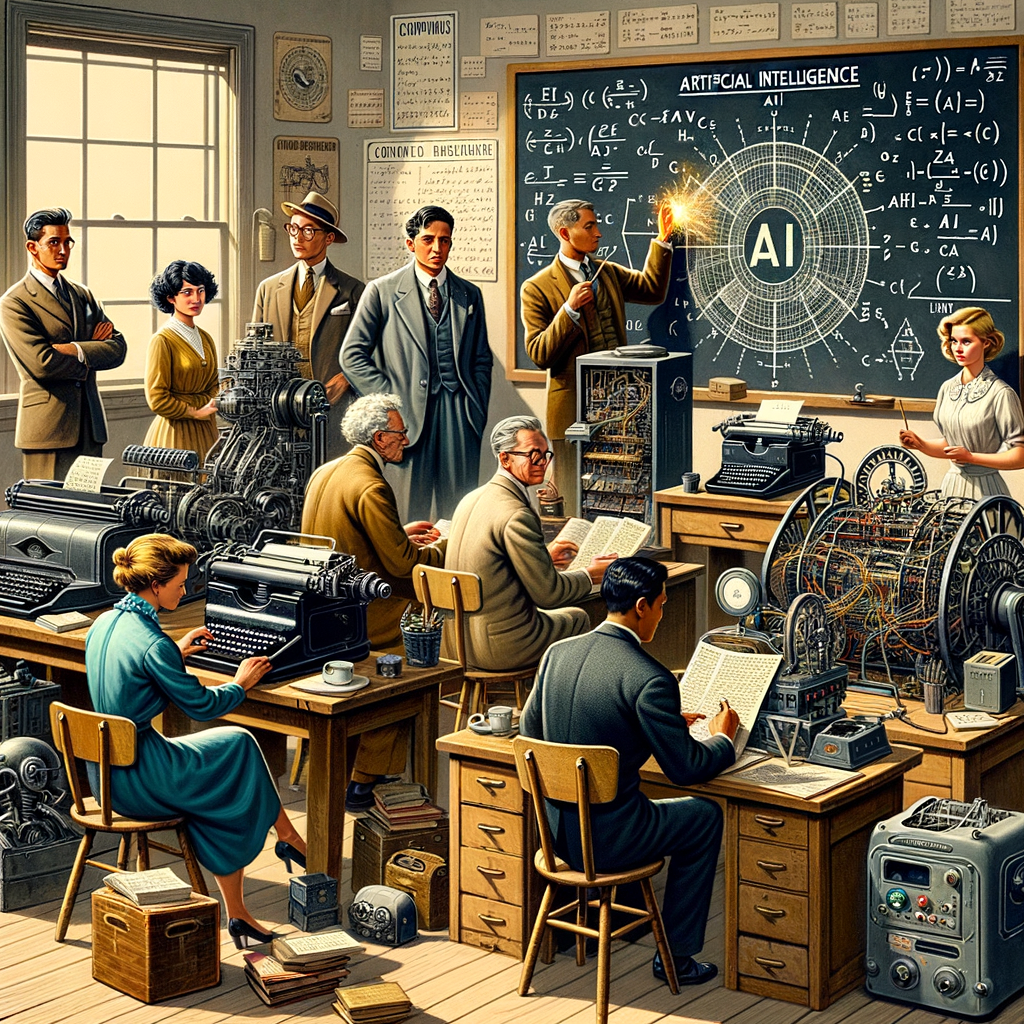Artificial Intelligence, or AI, has become an integral part of our modern world, revolutionizing industries and shaping the way we live and work. But where did it all begin? The spark of genius that ignited the field of AI can be traced back to the 1950s, a time when pioneering minds set out to create machines that could think and learn like humans. Let’s delve into the origins of AI in the 1950s and discover the brilliance that laid the foundation for the technology we know today.
The Rise of Artificial Intelligence
The 1950s marked the beginning of a new era in technology, as scientists and researchers turned their attention to creating machines that could exhibit intelligence. This era saw the birth of the term “Artificial Intelligence,” coined by John McCarthy, who is often referred to as the father of AI. McCarthy, along with other visionaries like Marvin Minsky and Herbert Simon, laid the groundwork for what would eventually become one of the most transformative technologies of the modern age.
Pioneering Minds in the 1950s
The 1950s were a time of great innovation and creativity, with pioneering minds working tirelessly to push the boundaries of what was thought possible. One of the most influential figures of this era was Alan Turing, whose work on artificial intelligence and computing laid the foundation for the development of intelligent machines. Turing’s seminal paper, “Computing Machinery and Intelligence,” introduced the concept of a machine that could exhibit intelligent behavior, sparking a wave of research and exploration in the field of AI.
Revolutionizing Technology
The 1950s saw the development of some of the first AI programs and systems, including the Logic Theorist and the General Problem Solver. These early technologies demonstrated the potential of AI to solve complex problems and make decisions in a way that mimicked human thought processes. Researchers and scientists in the 1950s were driven by a common goal: to create machines that could reason, learn, and adapt to new situations, ultimately paving the way for the AI-powered technologies we rely on today.
The Evolution of AI Brilliance
As the field of AI continued to evolve in the 1950s, researchers made significant strides in areas such as natural language processing, machine learning, and neural networks. The development of the perceptron, a type of artificial neural network, by Frank Rosenblatt in 1957 was a major breakthrough that paved the way for future advancements in machine learning and pattern recognition. These early achievements laid the groundwork for the brilliant minds of the 1950s to continue pushing the boundaries of AI and set the stage for the incredible advancements we see in the field today.
The 1950s were a time of unparalleled innovation and creativity in the field of artificial intelligence, with pioneering minds setting the stage for the transformative technologies we rely on today. The spark of genius that ignited the field of AI in the 1950s continues to inspire researchers and scientists to push the boundaries of what is possible, creating intelligent machines that have the potential to change the world. As we look back on the origins of AI in the 1950s, we are reminded of the brilliance and vision of the early pioneers who laid the foundation for the incredible advancements we see in AI today.
#AI


